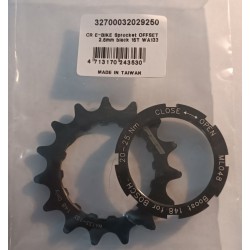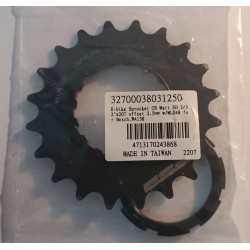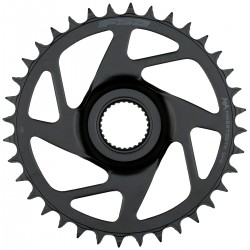Lánctányér, lánckerék, csavar

A kerékpár hajtómű lánctányérokról van szó. Az alábbiakban összefoglalom, hogy mire érdemes figyelni a vásárlás során, valamint bemutatom a leggyakoribb típusokat és jellemzőket:
1. Típusok:
- Kettős lánctányér: A leggyakoribb típus, amely két lánctányérból áll. A kisebb tányér a könnyebb áttételekhez, míg a nagyobb tányér a nehezebb áttételekhez használatos.
- Háromszoros lánctányér: Ebben az esetben három lánctányér található, ami több áttételi lehetőséget kínál. Ez különösen hasznos lehet hegyi terepen vagy változatos terepviszonyok között.
- Egyszárnyú lánctányér: Az egyszárnyú hajtóműrendszer egyetlen lánctányérból áll, amelyet általában olyan gravel vagy országúti kerékpárokon alkalmaznak, ahol a súly és az egyszerűség a fontos.
2. Jellemzők:
- Fogszám: A fogszámok meghatározzák a lánctányérok fogainak számát. A nagyobb fogszámú tányér nehezebb áttételeket eredményez, míg a kisebb fogszámú tányér könnyebb áttételeket biztosít.
- BCD (Bolt Circle Diameter): Ez a paraméter megadja a lánctányérokon lévő csavarok lyukkörének átmérőjét. A BCD fontos, amikor új lánctányérokat szeretnénk vásárolni, mert biztosítani kell, hogy a megfelelő méretűek legyenek a kerékpár hajtóművéhez.
- Anyag: A lánctányérok különböző anyagokból készülhetnek, például alumínium, acél vagy szénszálas kompozit. Az anyag választása befolyásolhatja a lánctányérok súlyát, szilárdságát és árát.
3. Vásárláskor figyelni kell:
- Kompatibilitás: Győződjön meg róla, hogy a vásárolni kívánt lánctányérok kompatibilisek a kerékpár hajtóművével és a sebességváltó rendszerével. Ellenőrizze a fogszámot és a BCD-t a megfelelő illeszkedés érdekében.
- Anyag és minőség: Fontos, hogy minőségi anyagból készült lánctányérokat válasszon, amelyek tartósak és megbízhatóak. Az anyag és minőség befolyásolhatja a teljesítményt és a tartósságot.
- Kerékpár típusa és cél: Vegye figyelembe a kerékpár típusát és a használati célt. Például, ha terepen kíván használni a kerékpárt, fontos lehet a nagyobb fogszámú vagy több lánctányéros rendszer.
Végül, a kerékpár hajtómű lánctányéroknál fontos a kompatibilitás, minőség és a kerékpár használati céljának figyelembevétele. A megfelelő lánctányérokat kiválasztva javíthatja a váltási teljesítményt és a kerékpározási élményt.




























